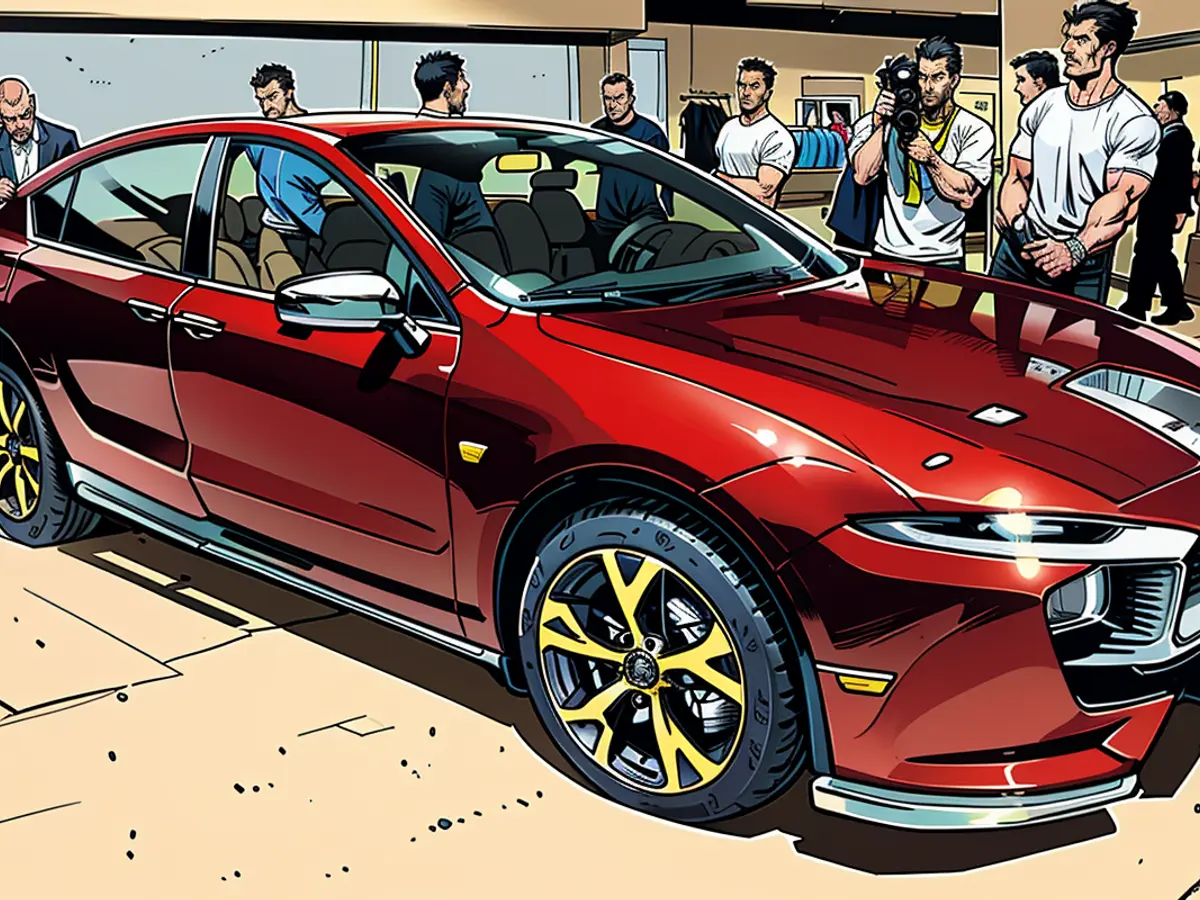Mazda strengthens its fleet with increased power capabilities.
Mazda has so far been cautious about battery electric vehicles, apart from the MX-30. However, the Japanese brand plans to change this direction in the coming year, especially with the help of China.
In terms of electrification, Mazda has lagged behind other Asian brands. Besides the MX-30, the Japanese firm doesn't have any electric vehicles in its lineup. Sales have been minimal due to the relatively small 35.5 kWh battery and the resulting 200 km range. The "rightsizing" idea, as Mazda calls it, hasn't won over customers.
A promising opportunity in the luxurious segment
A better chance may come from an elegant electric sedan in the luxury class. It was recently unveiled at the Beijing Auto Show and is the result of a collaboration with Chinese partner Changan. The 4.9-meter-long EZ-6 is currently being built in China for China, ostensibly according to official statements. However, it's possible that the EZ-6, as an electric successor to the Mazda 6, could be offered in Europe relatively quickly in the coming year. The name Mazda 6e is under consideration for this.
The Changan platform promises performance up to 200 kW/272 PS, a battery capacity up to 80 kWh, and a range of approximately 550 km. This would put Mazda in a competitive position. Another model based on the same platform is also planned - it was presented at the Beijing Auto Show as the Mazda Arata concept vehicle. Expected launch: 2026.
Planned: Electric models on their own platform
However, Mazda plans to manufacture other electric cars on their own platform, dubbed Skyactiv Scalable EV Architecture. The first candidate could be an SUV in the mid-size class. Launch: anticipated in about two years.
In 2027, Mazda's electric lineup will likely expand further into the compact segment. The exact body style isn't known, but it's possible Mazda has something similar to the CX-30 in mind. This new model would likely replace the current MX-30.
The CX-5 on its way out?
The CX-5 midsize SUV is set to retire by the end of this year. There are speculations that there might not be a direct successor. This would create an expensive gap. The CX-5 is currently one of Mazda's best-selling models in the brand's portfolio.
The reason for the delay isn't clear, as the next CX-5 uses the longitudinal layout (Longitudinal Layout) of Mazda's Multi-Solution Scalable Architecture. It has been ready for some time. It's already used under the CX-60, not only the first plug-in hybrid (PHEV) from Mazda and with the strongest series car the brand has ever built, but also with a diesel inline six-cylinder, which is only prevalent in the premium segment today.
Introduction of the new Maxi Model CX-80
The same technology is used by the new CX-80, which is set to be introduced this year. The SUV is the largest model in Mazda's European lineup. However, the new CX-5 differs from the CX-60 and CX-80 in one aspect. Customers won't be able to choose the plug-in hybrid, but they might be able to choose a full hybrid developed by Mazda itself. Mazda announced the development of this in November 2022.
With its finalization, Mazda's engine engineers are intensively focusing on it. In the full hybrid, there's, like Toyota, great CO2 savings potential in volume segments. It's quite possible that the HEV (Hybrid Electric Vehicle) will first appear in the Mazda 3 and the technically identical CX-30 in the middle of the decade as a cross-platform. Both models will continue to be produced beyond their original lifecycle with product enhancements, particularly with regard to connectivity and digitalization - and less with design changes. Mazda has implemented a relatively timeless design for these models.
This year, the Mazda 3 and CX-30 could receive a new gasoline engine. A 2.5-liter four-cylinder mild hybrid is replacing the older 2.0-liter counterpart. In addition, the Skyactiv-X engine with 137 kW/186 PS and a unique combination of gasoline engine and diesel's self-ignition principle remains in the range.
The production of the compact car Mazda 2 will end this year. In the B-segment, Mazda will only have the hybrid variant from the Toyota collaboration in stock.
Meanwhile, the cult sports car MX-5 will continue to be produced. This two-track electrification strategy (Changan platform and own EV architecture) doesn't apply to it. The MX-5 recently received an update, and its end isn't in sight. Mazda plans to continue building it despite low sales numbers and is even thinking about a new generation. It would be the fifth since 1989. The first design hints could come from the study "Iconic SP," which was on display at the Tokyo Motor Show in the fall.
Read also:
Mazda's strategic partnership with Chinese carmakers opens up new opportunities, particularly in the luxury segment. The upcoming electric sedan, dubbed EZ-6, could challenge competitors with its impressive power and range, potentially reaching European markets soon. Apart from the MX-30, Japanese carmakers like Mazda have been slow to adopt electromobility, lagging behind Chinese counterparts in electric vehicle production. However, Mazda plans to strengthen its electric offering with new models, including an SUV and compact car, utilizing their own Skyactiv Scalable EV Architecture.








